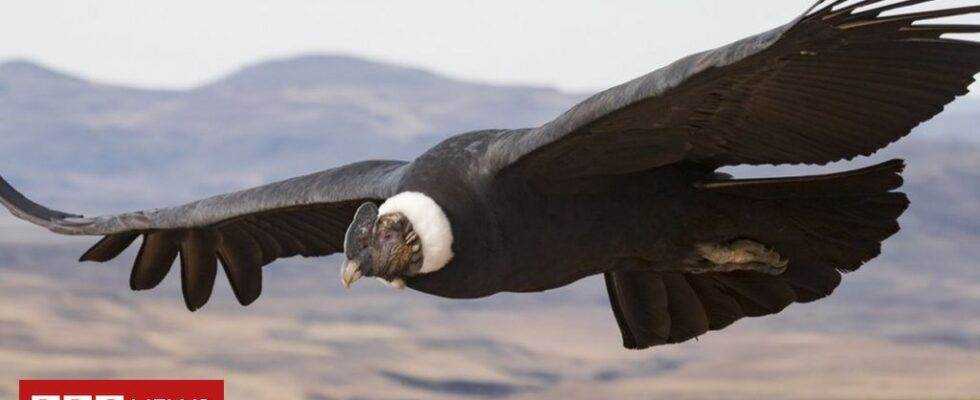Image copyright
Facundo Vital
The Andean condor is the world’s heaviest soaring bird and can weigh up to 15kg
The world’s heaviest soaring bird flaps its wings just 1% of the time during flight, researchers have found.
The Andean condor, which can weigh up to 15kg, makes use of air currents to stay airborne for hours at a time.
Flight recorders found one bird flew for five hours without flapping, covering about 172km (107 miles).
The study is part of a collaboration between Swansea University’s Prof Emily Shepard and Dr Sergio Lambertucci in Argentina.
They wanted to find out more about how birds’ flight efforts vary depending on environmental conditions.
Published in the journal Proceedings of the National Academy of Sciences, the study found 75% of the birds’ flapping was associated with take-off.
Image copyright
Swansea University
Prof Emily Shepard says condors have flexible “soaring strategies”
Prof Shepard said the research showed “just how flexible their soaring strategies are”.
“Human glider pilots can soar all day if the conditions are right, so in some senses the condor’s performance may not seem surprising,” she said.
“But glider pilots look at the weather and decide whether or not it is good for flying.
“Condors probably do this to a certain extent but at some point they will get hungry, and they need to fly to find food.
“They feed on carcasses, but these don’t necessarily appear in places that are ideal for condors to fly to.
“So we were expecting that they might encounter some tricky conditions – or at least conditions that make them flap – in the search for food.”
Image copyright
Alvaro Moya Riffo
The condor uses thermal air currents to stay airborne
Dr Lambertucci said birds needed to find rising air to “avoid an unplanned landing”.
“These risks are higher when moving between thermal updrafts,” he said.
“Thermals can behave like lava lamps, with bubbles of air rising intermittently from the ground when the air is warm enough.
“Birds may therefore arrive in the right place for a thermal, but at the wrong time.”
